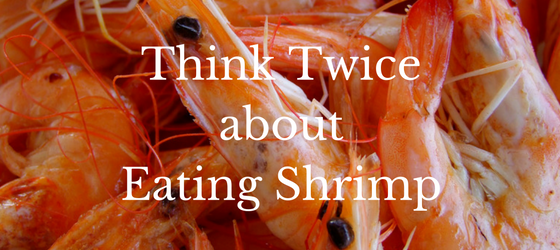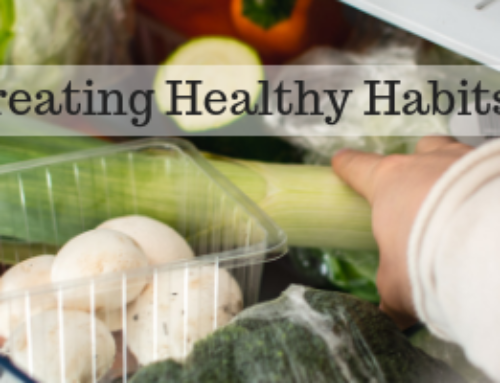By now, most of us are educated as to the reasons to avoid farmed salmon. For instance, farmed salmon harbor PCB’s in their flesh, are administered higher levels of antibiotics than livestock, and are kept in containment areas that restrict movement, which can lead to disease.
But you may not be aware as to why you should be cautious when purchasing and eating one of the most popular seafood items in the United States. What is it? Shrimp.
Oh, we all love shrimp. You see, Americans tend to favor a mild taste when it comes to seafood. I can attest to this. For years I have been trying to convince my clients to eat sardines – one of the healthiest and lowest mercury fish available. But, probably less than one percent of my clients will eat them, due to their strong flavor.
Shrimp is so loved in the United States that we eat 1.3 billion pounds every year. That works out to about four pounds per person, per year. In fact, I often recommend shrimp as a good protein source and an easy, quick dinner to cook on the fly. Just sauté some minced garlic in olive oil, toss in the shrimp, and cook until just done. Sprinkle with parsley.
So the problem isn’t with the nutritional profile of the shrimp, per se. The problems arise from how it is raised, in the case of farmed shrimp, and the labor practices that bring it to market. Let’s take a closer look.
Over 90% of the seafood consumed in the US per year is imported from other countries, with shrimp leading the way. The majority of imported shrimp is farmed and comes from Southeast Asia. Farming practices in Southeast Asia often comprise growing the shrimp in huge industrial tanks, or shallow man-made ponds where they are fed commercial pellets, sometimes containing antibiotics to ward off disease. Overcrowding of shrimp is common, and if the tanks or ponds are not managed correctly, a sludge of fecal matter, chemicals, and excess food can build up and decay. These less than optimal farming practices can lead to unwanted bacterial contamination. Last year, Consumer Reports tested 342 frozen samples of shrimp purchased from supermarkets and other food retailers in 27 US cities and found that 60% of the raw samples were contaminated with bacteria like salmonella, E. coli, and listeria. Yikes!
You can read the full Consumer Report’s Report here: “How Safe is Your Shrimp?”
The second concern with shrimp imported from Southeast Asia is the use of slave labor for the fishing and processing of the shrimp. It is shocking to believe, and hard to think about, but it is true. Much of the Thai shrimp industry, the world’s largest, relies mostly on forced labor from Burmese migrants to process farmed shrimp. Abuses in the processing operations include violence against workers, human trafficking, child labor, debt bondage, and sexual harassment.
The slavery practices used by the Thai shrimp industry were brought to light in the last two years through the Associated Press and their investigative journalists. Here is a link to their multimedia series entitled “Seafood from Slaves” that provides detail on how the Associated Press helped to expose the abusive practices of the fishing industry in Southeast Asia, and how their efforts helped lead to the release of more than 2,000 slaves. The project was awarded a Pulizer Prize earlier this year.
Find out more about the AP’s “Seafood from Slaves”.
If you like listening to stories, here is a link to an interview from KCRW in Los Angeles with the AP investigative journalist, Martha Mendoza, who helped uncover these atrocities. It is a good listen that captures the details of their experience uncovering the labor abuses in the shrimp industry in Southeast Asia.
Interview with Martha Mendoza on KCRW – Seafood from Slaves
So, how can you find shrimp that is procured in an environmentally sustainable manor, and isn’t tainted by slavery? It is somewhat complicated, but here are a few tips. First, when purchasing shrimp, choose supermarkets that give clear labeling of the place of origin for the shrimp sold and avoid imported shrimp from Southeast Asia. Wild shrimp can be a good choice, but you have to be careful because not all wild shrimp are harvested in a sustainable manner. Some of the best wild shrimp come from the Northwest, Canada, and Alaska. If you are from this region, you may enjoy spot prawns. They are wonderful tasting and local, but come in a short time window during the Spring. Wild shrimp from Mexico is widely available, but can be caught in a manner that is poor for marine wildlife. Shrimp from Mexico is often caught using trolling methods that troll the bottom of the sea; for every one pound of shrimp caught, two pounds of by-catch are killed and thrown out.
For a more complete list, I’ll defer to the Monterey Bay Aquarium Seafood Watch Program that provides detailed information on the best shrimp to buy, and that to avoid.
Another way to shop for sustainable shrimp is to support stores that take sustainability seriously, and have implemented policies to transparency of information. Greenpeace comes out with an annual list and report card of such organizations. For the third year in a row, Whole Foods has placed number one, with Wegmans, Hy-Vee, and Safeway coming in right behind Whole Foods. You can view the full list here: Carting Away the Oceans Report.
If you have gotten this far, I want to thank you for reading my blog post. I don’t often talk about the social concerns related to the food we eat, because I want to focus on what I know best – nutrition. However, I am also an educator. It is my belief that we can’t separate ourselves from how our food is grown or procured. We must educate ourselves, so we can make the best decisions not only for our bodies, but also for the world around us. Sometimes that education includes getting personal with where food comes from and how it is grown or raised.
As always, if you found this blog post informative, please share with family or friends.






